RP ProPulse – Numerical Simulation of Pulse Propagation
| Overview | Purpose | Model | Interface | Demos | Versions |
Example Case: Quasi-Soliton Mode-locked Bulk Laser
In contrast to the previous simple example of a passively mode-locked laser, we now also consider chromatic dispersion and the Kerr nonlinearity; those are relevant for operation in the sub-picosecond pulse duration regime. In that regime, we utilize soliton effects; that is called (quasi-)soliton mode locking. The pulse shaping is mainly done by dispersive and nonlinear effects, while the saturable absorber only starts the mode locking and stabilizes the resulting pulses, but has only a weak effect on the pulse parameters.
The laser resonator is described in the script as follows:
resonator: linear
* OC: T_out = T_oc
* Crystal: gain(l) = g(l) [P_sat_av = P_sat_g, KK = 0], SPM = gamma_g
* SESAM: satloss = dR_S [E_sat = E_sat_S, tau = tau_S],
GDD = GDD_tot,
center [N = 10]
resonator endFor simplicity, all chromatic dispersion is assumed to be concentrated in the SESAM. Various variable values are used, the definitions of which are not shown here. The gain bandwidth is 40 nm, the SESAM has a modulation depth of 1.5%, and the output coupler has a transmission of 5%. The model contains a realistic strength of the Kerr nonlinearity the laser gain medium and a round-trip GDD of −1500 fs2.
The initial pulse duration is 500 fs, and within about a thousand resonator round-trips it approaches the steady-state value, which can be accurately estimated using a simple soliton equation.
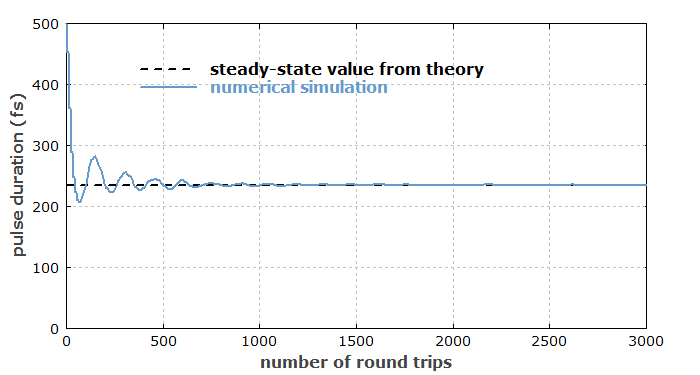
The recovery time of the SESAM has been assumed to be 1 ps. Not much changes if we increase that to 2 ps, for example. However, for a recovery time of 6 ps, the pulses become unstable:
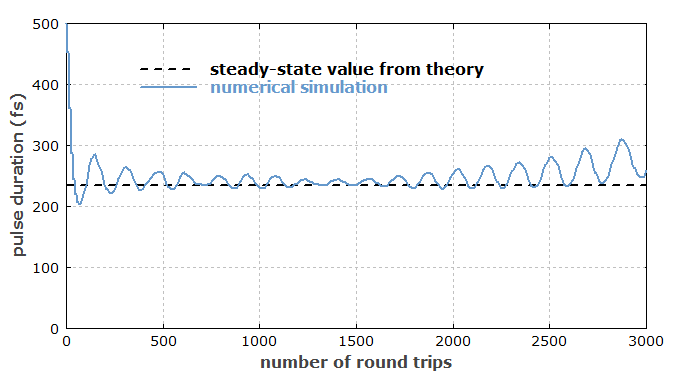
In that regime, the SESAM is no longer able to suppress the growth of “noise” traveling just behind the main pulse. Note that such noise can then profit from the still nearly fully saturated absorber and can thus have a positive net gain per round trip. The results also confirm the experimental experience that the SESAM parameters do not substantially influence the pulse parameters, as long as they are sufficient to operate in the stable regime – which requires sufficiently fast recovery and sufficiently strong saturable absorption. Our model allows us to investigate the stability limits – in a far easier way than with experiments.
In the following diagram, the group delay dispersion per resonator round trip is varied (for a SESAM recovery time of 1 ps). For sufficiently strong GDD, we are operating the stable regime, where the pulse duration is approximately proportional to the GDD. (A slight deviation from the linear behavior results from the fact that the pulse energy is a bit lower for strong GDD because the power losses at the SESAM are a bit higher in the regime of long pulses.) For only slightly negative GDD, the pulses are unstable – therefore, the corresponding markers are missing in the diagram.
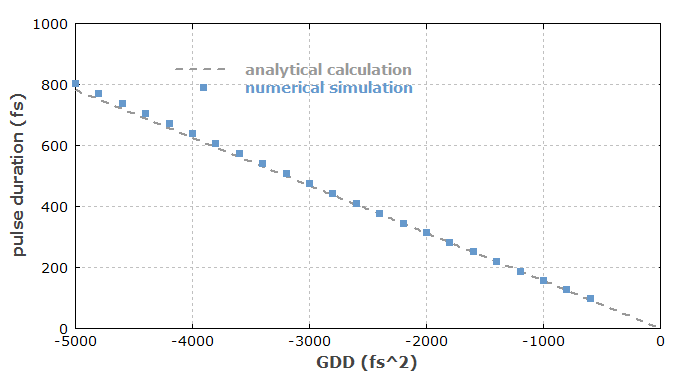
We can also study the behavior in the unstable regime, e.g. with a total GDD of −400 fs2; the following diagram shows the evolution of the optical spectrum within thousands of round trips:
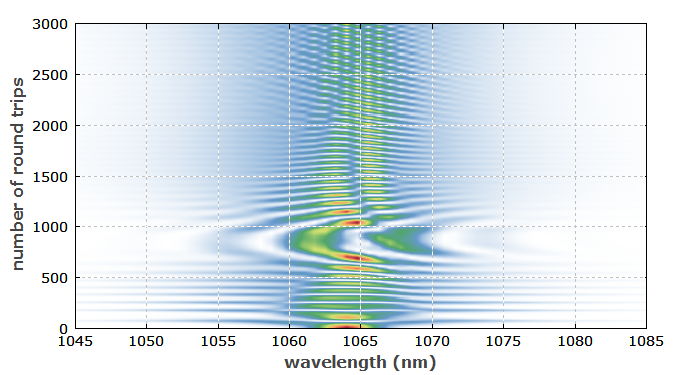
For a total GDD of −800 fs2; we would be in the stable regime:
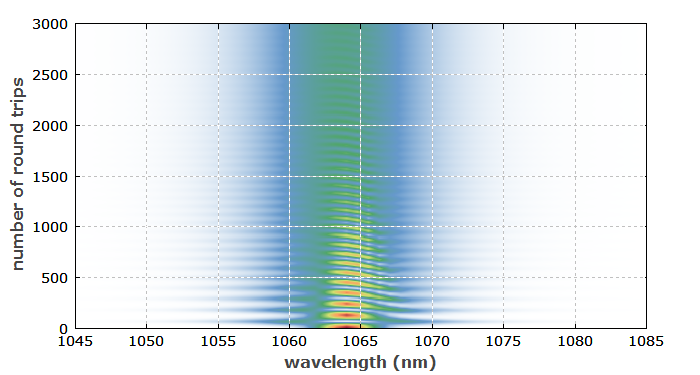
Here, we only observe some initial oscillations in the spectrum, but those are damped and therefore die out.
